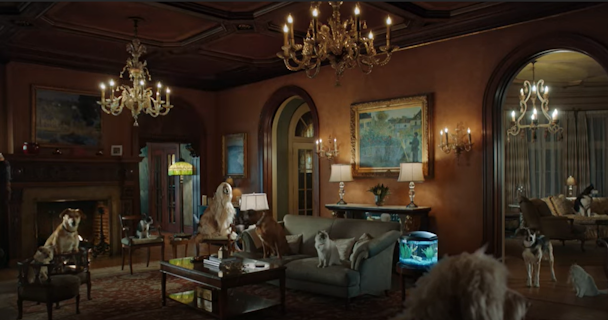7 ways to create powerful, disruptive brand storytelling in a digital world
Brand storytelling is the art of shaping a company’s identity using narratives and storytelling techniques that facilitate an emotional response and establish meaningful connections with audiences. But it’s one thing to draft an incredible story; the story is just the beginning. How do you bring that story to life in a crowded digital world to create maximum impact and engagement?

7 ways to create powerful, disruptive brand storytelling in a digital world
Humans have always been storytellers – stories have defined us since the beginning of time. Throughout time, the same stories and tropes are brought back over and over again, often retold in many different ways.
Facts change but stories don’t, explains Molly Rowan-Hamilton, strategy director at global branding agency BrandOpus: “Stories can be refreshed in expression, but their meaning stays the same. Their endurance is proof of their connection. Especially when it comes to purchase decisions, from a neurological perspective, stories are more emotive, engaging and persuasive – not to mention more memorable.”
Sebastian Gutierrez, senior director, marketing EMEA at The Trade Desk, agrees, but notes that the most impactful brand stories are now driven by data. He says: “Powerful marketing can enhance our everyday experiences – whether that’s watching TV, scrolling through your mobile, or walking along the street. Brand stories that resonate with audiences are particularly impactful when driven by data, which means their stories can meaningfully connect and prompt an emotional response.”
According to Rowan-Hamilton, there are four simple yet significant elements to consider in every story: tap into universal insight; reveal the implicit tension; create the resolution; and share the lesson. Petco and Airbnb illustrate this through stories brought to life across multiple digital touchpoints.
In the first example, Petco appears to be solving a major problem for its consumers – pets have a whole set of nuanced needs that their owners don’t really understand. “Projecting human emotions onto pets makes customers realize that pets have evolved needs and Petco understands them in a way we can’t,” says Rowan-Hamilton.
The second example from Airbnb “feeds into its customer’s need for having real experiences and shows them that an authentic stay with Airbnb can create a sense of realness and belonging,” adds Rowan-Hamilton. “In that same vein, its digital activations have also been created by real people to show the intimacy of what it’s like to stay in someone’s hotel as opposed to a sterile hotel.”
These insights were shared during a workshop hosted by The Drum, in partnership with The Trade Desk, for members of the Marketing Innovation Lab (MIL) – a community of emerging marketers from The Drum’s Future 50. The session was led by Rowan-Hamilton, who also shared a checklist of seven tips to create powerful, disruptive brand storytelling:
-
Keep it simple – our memories and attention spans are short. Stick to one core message. Truly powerful stories are never complicated.
-
Make it human – use emotive, engaging yet easy language. Utilize empathy to connect and be relatable. This is not a job for robots.
-
Don’t think literally – find an unusual take on your core brand message or idea. Think bigger, bolder and higher.
-
Be disruptive yet familiar – it must feel unique yet intuitive to the brand so you can stick out without seeming farfetched.
-
Idea before execution – think big idea first then execution. The story determines which influencer or digital platform will be best for the idea, not the other way round.
-
Make the touchpoints work for you – different touchpoints have differing capabilities and functions. The story needs to be refreshed differently for each of them.
-
Make your consumer a co-author – get audiences to contribute, amplify their voices and replay it in some way. Encourage them to make their mark on the brand’s story.
Attendees were also invited to workshop ideas and create a story for the launch of a fictional instant coffee brand. One of the MIL community members who took part in the workshop – Chris Player, digital marketing manager at IAG Loyalty – said: “I really valued Molly’s insight and experience in creating an impactful brand story for any audience. We learned to focus on the universal truths that connect people to the core value of our brands.”
Xavier White, CSR & innovation marketing manager EMEA at Verizon Business, adds: “I’ve always been a huge fan of brand storytelling and I think it’s integral to the present and future of our industry. Brands not just having stories, but actually being them, is really an inevitability when you look at the history of humans and how we’re innately storytellers. However, these stories only resonate when we tap into insights.”


